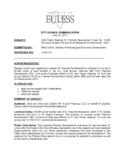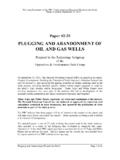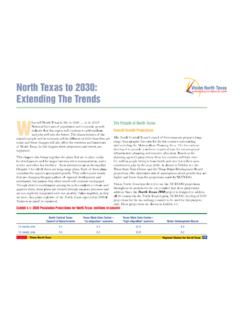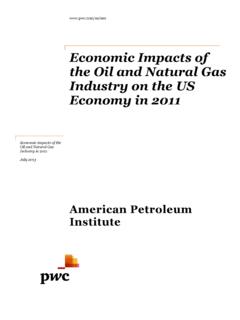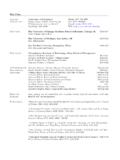Transcription of SINGAPORE Singapore Local Economic Development: The …
1 SINGAPORE SINGAPORE Local Economic development : The Case of the Economic development Board (EDB)1 Synopsis. SINGAPORE is today ranked among the world s strongest and most competitive economies. Forty years ago, it had a very different economy. It was beset with acute housing shortage and severe unemployment. The Economic development Board (EDB) has played a key role in developing SINGAPORE s economy, creating wealth and jobs for the population. Established since 1960, the EDB is SINGAPORE s one-stop and lead government agency for planning and executing Economic strategies to enhance SINGAPORE 's position as a global hub for business and investment.
2 The EDB seeks to facilitate and support both Local and foreign investors in manufacturing and services sectors to develop and expand new business opportunities, especially capital-intensive, knowledge-intensive and innovation-intensive activities. Rationale for the Establishment of EDB Post-independence SINGAPORE , forty years ago, was a third world country with a GNP per capita of less than US$ The city s population was then growing rapidly,3 unemployment was rising (over 13 per cent per year) and its infrastructure was poor.
3 More than two-thirds of its population was living in slums and squatter settlements on the city s fringe (Yuen, 2005). According to the United Nations Industrial Survey Mission (1960-61), some 214,000 new jobs (50% increase in workforce) had to be created for the decade of 1961-70 (Yuen, 1991). During the colonial period, SINGAPORE s economy was primarily dependent on entrep t trade. But this Economic activity and primary production offered little prospect for job expansion. The withdrawal of British troops in the post-independence period further aggravated the unemployment situation, requiring the creation of another 40,000 new jobs.
4 Besides housing, employment generation was the priority. Following the recommendation of United Nations Industrial Survey Mission (1960-61), the most feasible solution to SINGAPORE s then unemployment and Economic development was to embark on a bold and comprehensive program of industrialization. Labor-intensive industries were a prime target. However, industrialization was a relatively new experience to SINGAPORE had no industrial tradition. Both capital and entrepreneurship had historically been active in trading and commercial activities.
5 The majority of its working population was in trade, processing and service activities. Expertise was, therefore, accumulated in these activities rather than in industrial establishments. It was recognized that such commercial capital was not easily adaptable to industrial investment without deliberate government intervention. Also, SINGAPORE s domestic market was too small to support many viable industries (Goh, 1963). It soon became 1 Prepared by Belinda Yuen, National University of SINGAPORE ; Email: 2 SINGAPORE was a former British colony (1819-1959).
6 In 1959, it obtained internal self-rule, joined the Malaysia federation from 1963-1965 and became an independent country on 9 August 1965. 3 During the decade from 1947-57, SINGAPORE s population was growing at an annual growth rate of per cent, of which per cent represented natural increase and 1 per cent immigration. In 1957, the crude birth rate peaked at per thousand. Beginning in 1949, family planning services were offered by the private SINGAPORE Family Planning Association, which by 1960 was receiving government funds and assistance.
7 Since the mid-1960s, SINGAPORE 's government has attempted to control the country's rate of population growth with a mixture of publicity, exhortation, and material incentives and disincentives. Since 1986, the government has reversed its family planning policy to encourage more births with the trend of low population growth. 4 The colonial government had set up the SINGAPORE Industrial Promotion Board in 1957 for the promotion and development of industries. 2evident to the new rulers that to succeed, the industrialization effort in SINGAPORE would need the active support and encouragement of the government.
8 The EDB was accordingly set up in 1961 with a budget of S$100 million to spearhead a program of rapid industrialization to create new jobs and promote Economic development . The EDB replaced the SINGAPORE Industrial Promotion Board (SIPB), which had a revolving fund of S$1 million and a staff consisting only of a manager and a confidential secretary. The SIPB was found to be too small to be effective on the scale required to promote industrialization and growth. The EDB was given extensive powers and was initially entrusted with not only the financing of industries, promotion, manpower development and provision of incentives but also the development of industrial estates ( Economic development Board Ordinance 1961, No.)
9 21 of 1961). However, as the industrialization program gathered momentum, the functions of the EDB also grew in complexity. In consequence, a decision was made in 1968 to streamline its functions to better enable the EDB to concentrate on investment promotion. In June 1968, a public limited company, the development Bank of SINGAPORE , and another statutory board, the Jurong Town Corporation (JTC), were formed to take over the industrial financing and industrial estate development functions of the EDB respectively.
10 Responsibility and Services The EDB is responsible for investment promotion and the continued Economic success of SINGAPORE . In 2006, it contributed to more than 40 per cent of SINGAPORE s GDP; achieving S$ billion commitments in new manufacturing investments while service companies committed S$ billion in new business spending (The EDB Annual Report, 2006/07). The EDB works closely with the Ministry of Trade and Industry to provide long-term planning and strategic directions to SINGAPORE s industrialization program in terms of specific industrial trends and target industrial sectors.











